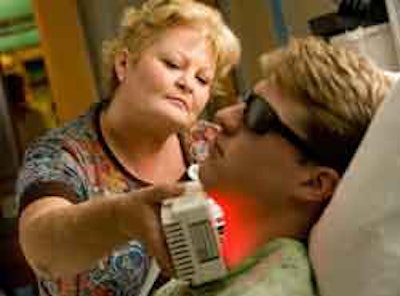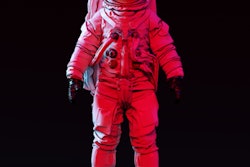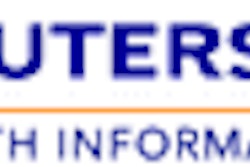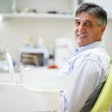
A light-based technology originally developed for plant growth experiments on space shuttle missions can help reduce the painful side effects -- including oral mucositis -- that can occur following chemotherapy and radiation treatments.
The WARP 75 is a wound-healing device developed by Quantum Devices for NASA, the agency noted in a press release. It is about the size of a human hand and comprises a bank of 288 red and infrared light-emitting diodes and high emissivity aluminiferous luminescent substrate (HEALS) technology.
In a two-year clinical trial of the WARP 75 funded by NASA's Innovative Partnerships Program at the Marshall Space Flight Center, cancer patients undergoing bone marrow or stem cell transplants were treated with the device for oral mucositis.
 The WARP 75 LED-based system developed by Quantum Devices in conjunction with NASA. Image courtesy of NASA.
The WARP 75 LED-based system developed by Quantum Devices in conjunction with NASA. Image courtesy of NASA.Twenty cancer patients from Children's Hospital of Wisconsin and 60 cancer patients from the University of Alabama at Birmingham Hospital and the Children's Hospital of Alabama were randomly placed in one of four study groups: low- and high-risk patients receiving the experimental light therapy through the WARP 75, and other low- and high-risk patients receiving light through a similar device without therapeutic effects. The low-risk patients were those whose chemotherapy and radiation treatment tended to cause mild or no mucositis; the high-risk patients were those whose therapy treatment tended to cause severe cases of mucositis.
Patients were treated to the light therapy by a nurse holding the WARP 75 in close proximity to the outside of the patient's left and right cheek and neck area for 88 seconds each once a day for 14 days at the start of the patient's bone marrow or stem cell transplant. During that time, trained clinicians assessed the patient's mouth and patients completed a simple form to indicate their level of pain.
The researchers concluded that there is a 96% chance that the improvement in pain of those in the high-risk patient group was the result of the HEALS treatment, according to NASA.
The WARP 75 can provide a cost-effective therapy since the device itself is less expensive than a day at the hospital, and it's a proactive therapy for mucositis symptoms that are currently difficult to treat without negative side effects, according to NASA.
The device could offer patients several additional benefits: better nutrition since eating can be difficult with painful mouth and throat sores, less narcotic use to treat mouth and throat pain, and an increase in patient morale.
The U.S. Food and Drug Administration is currently reviewing a premarket approval application for the WARP 75, NASA noted.



















